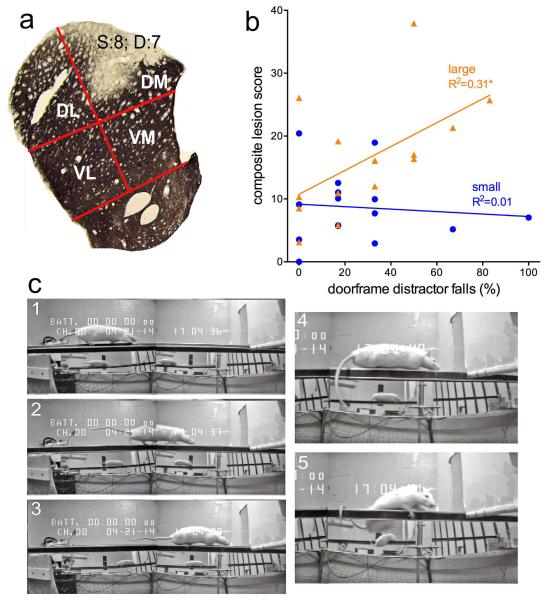Fig. 4.
Illustration of method used to quantify striatal DA lesions (a) and correlation between composite lesion scores and falls in the presence of the doorframe distractor (b). As detailed in methods, for each hemisphere, the size (S) and degree (D) of TH-immunoreactivity loss was quantified in four striatal quadrants (DL, dorsolateral; DM, dorsomedial; VL, ventrolateral; VM, ventromedial). Estimation of the ‘degree’ of loss reflected the homogeneity of loss within a quadrant; in the example in a, about a third of the DM quadrant showed residual TH-immunoreactivity, yielding a D score of 7 (out of 10; see Methods for the calculation of one composite score per animal). Composite lesion scores from large DA, but not small DA lesions, significantly correlated with the number of falls in the presence of the doorframe (b). c: Rats with a large DA lesion traversing the rotating rod (frames 1-3; 36-30 s), freezing forward movement when reaching the doorframe (4, 40th s), causing a fall (5). Importantly, this rat did not fall during the four pre-surgery exposures to the doorframe.

